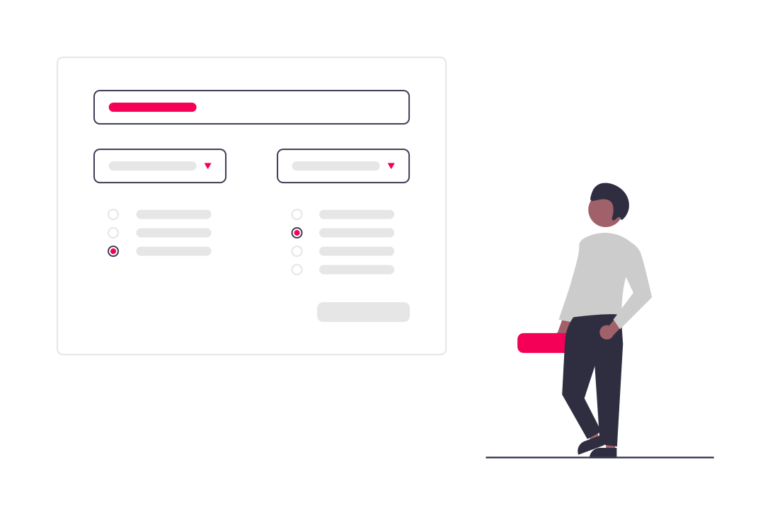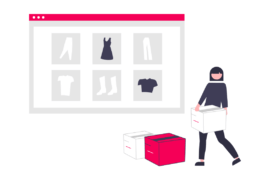Choosing one between header bidding and ad mediation can be a tricky choice as one needs to be well-versed with the nuts and bolts of both these technologies. That’s why we’ve come up with this blog. So dive in and discover valuable insights about header bidding vs ad mediation.
Have you ever heard of the idiomatic expression “bidding war”? Well, if you’re one of the players in the ad tech industry, you’ve probably heard of it and even experienced it firsthand. That’s because when it comes to monetizing digital content, the competition can be fierce.
Why? Let’s face it, publishers and advertisers strive to increase their revenue and put in their best efforts to attain those goals. If you’re one of them, you must have come across terms – header bidding vs ad mediation.
What Is Header Bidding & Ad Mediation?
Enter header bidding vs. ad mediation – two popular techniques publishers use to optimize ad revenue. Both options have evolved, with new capabilities and features constantly being added.
In fact, Taboola recently expanded its native bidding service with the launch of Taboola Header Bidding, enabling advertisers to reach new suppliers and helping publishers generate incremental revenue from their display ads inventory.
Ad mediation has also kept pace with advancements in the ad tech industry. For example, ironSource, a leading mobile monetization platform, offers a hybrid mediation solution that enables mobile app developers to access multiple demand sources and optimize their ad inventory.
In this blog post, we’ll break down the basics of header bidding vs ad mediation and understand their difference, pros, and cons. So, sit tight and get ready to bid for the best ad revenue.
What’s Header Bidding?
As a quick refresher, we’ve covered header bidding and its aspects in previous blog posts. But for those unfamiliar with the term, let’s quickly define it briefly.
Ideated back in 2014 and made its way into the mainstream in 2016, header bidding is a technique publishers use. It allows them to offer their ad inventory to multiple SSPs (Supply Side Platforms) and ad exchanges before requesting the ad servers.
That said, let’s now understand what ad mediation is.
Also Read – Header Bidding: A Comprehensive Guide
What’s Ad Mediation?
Ad mediation, on the other hand, refers to the technology that enables publishers to manage multiple demand sources and ad networks within a single platform. What’s different about it? It gives you more control, such as the ability to set up rules and preferences for each ad network. These rules and preferences can include priority, fill rate, and eCPM.
Based on your preferences, the ad mediation platform will look for the best ad network to serve the ads. It helps publishers save considerable time as they won’t have to manually optimize their fill rate and revenue across different ad networks.
Though both have some similarities, they differ in multiple ways. That said, let’s now take a look at the differences they share.
Also Read – Programmatic Ad Mediation Explained for Publishers
Header Bidding vs Ad Mediation: Differences
Ad Selling Approach
As mentioned, header bidding allows publishers to offer their ad inventory to multiple ad exchanges. It works by publishers inserting a header tag on their website’s header, a piece of code that sends bid requests to multiple ad exchanges. After that, advertisers start bidding for publishers’ ad space in real-time, and the one with the highest bid wins.
Talking about ad mediation, publishers manage and optimize their ad inventory by singling out the best ad networks to serve an ad for each impression. Unlike header bidding, to get started with this, publishers need to integrate multiple ad networks into a single ad server, which selects the best-performing network for each ad impression based on predefined rules.
Revenue Potential
Next, implementing header bidding can result in higher revenue potential for publishers. It’s because ad inventory is sold to the highest bidder in the auction. Apparently, this also leads to increased competition and higher CPM (Cost Per Mile), which translates to high revenue.
Now coming to ad mediation, while it still helps publishers optimize their ad inventory, it may not result in maximum revenue potential. When you rely on the ad server, it selects the best-performing network based on predefined rules, which may not necessarily result in the highest bid.
Implementation Complexity
Header bidding can be more complex to implement compared to ad mediation. Publishers need to insert a header tag on their website’s header, which involves multiple ad exchanges and bidders. This can require more technical knowledge and resources.
Ad mediation, on the other hand, is simpler to implement as it involves integrating multiple ad networks into a single ad server. Publishers can set up rules and preferences for each network, and the ad server handles the rest.
Optimization Capabilities
Header bidding can help publishers optimize their ad inventory by exposing them to multiple ad exchanges and bidders. This can lead to increased competition and higher CPMs. However, optimization capabilities may be limited to the bidders and ad exchanges used in the header bidding setup.
On the other hand, Ad mediation allows publishers to optimize their ad inventory by selecting the best-performing network for each impression. This can help maximize revenue by choosing the network most likely to fill the impression at the highest CPM. The ad server can also fill unsold inventory with ads from other networks, ensuring maximum revenue.
| Header Bidding | Ad Mediation |
| Publishers offer ad inventory to multiple ad exchanges simultaneously | Multiple ad networks are integrated into a single ad server |
| Bidders compete in real-time for ad inventory | Ad server selects the best-performing network based on predefined rules |
| Can result in higher revenue for publishers as inventory is sold to the highest bidder | Helps publishers optimize ad inventory by selecting the best network for each impression |
| Implementation requires inserting a header tag on website’s header | Implementation requires integrating multiple ad networks into a single ad server |
| More complex implementation but can result in higher revenue potential | Easier implementation but may not result in maximum revenue potential |
From what we have learned so far, both ad mediation and header bidding can be effective options for increasing ad revenue. However, choosing between both concerns the publishers’ needs and goals.
Now, let’s look at what both have in store for us.
What are the Benefits?
Both header bidding and ad mediation have their own set of advantages. Let’s start with the header bidding first.
How Header Bidding Benefits Publishers?
Header bidding is smart for anyone looking to boost their ad revenue. By increasing competition and price for your ad inventory, you can maximize your earnings and get the most out of your website or app.
But that’s not all. Header bidding also gives you more control and transparency over your ad monetization. You can see the bids and performance of each demand source, making it easier to decide which ads to display and which to pass on.
Another benefit of header bidding is that it allows you to diversify your demand sources. This reduces your dependency on any single network, which can be a game-changer if one of your networks experiences a dip in performance or goes offline. In fact, the adoption rate of header bidding has been tremendous. Take a look –
How Ad Mediation Benefits Publishers?
Ad mediation is a great way to maximize your ad revenue by accessing multiple ad networks and sources through one platform. It’s like having a personal assistant to handle all your ad monetization needs, saving you time and resources. With ad mediation, you can increase your fill rate and revenue without having to worry about juggling multiple ad networks.
On top of that, it can also help in reducing page latency and loading times, leading to a faster and smoother user experience. And it goes without saying that user experience can make or break the first impression of users on your website. Thus, to increase your revenue, user experience is one of the major factors to take into account.
So, if you want to up your ad monetization game, give ad mediation a try.
Also Read – A Complete Guide to Mobile Ad Mediation Platforms (2023)
If all of this sounds too perplexing, look no further than Geniee International.
Why Should You Rely on Them?
Geniee International helps you maximize your revenue with its state-of-the-art ad tech services and data-driven approach. They offer a comprehensive range of solutions, including header bidding, ad mediation, ad management, and more. So, let Geniee International empower your advertising strategy and take your revenue to new heights.
Key Takeaways – Header Bidding vs Ad Mediation
- Header bidding involves offering ad inventory to multiple ad exchanges simultaneously, allowing bidders to compete in real-time whereas Ad mediation involves integrating multiple ad networks into a single ad server, which selects the best-performing network based on predefined rules.
- Next, header bidding can result in higher revenue potential for publishers as inventory is sold to the highest bidder, while ad mediation helps publishers optimize ad inventory by selecting the best network for each impression.
- Implementation of header bidding can be more complex than ad mediation, as it involves inserting a header tag on the website’s header and requires technical knowledge and resources.
- Ad mediation is easier to implement than header bidding, as it involves integrating multiple ad networks into a single ad server and setting up rules and preferences for each network.
- Both techniques have their pros and cons, and publishers should choose the option that best suits their needs and goals.
That being said, let’s wrap up the blog right here with the information mentioned above. For more information, please refer to the following frequently asked questions.
FAQs – Header Bidding vs Ad Mediation
Header bidding allows all demand sources to compete for ad inventory at the same time, whereas ad mediation selects the best ad network for each ad request. Header bidding is typically used for programmatic advertising, while ad mediation is often used for traditional ad networks.
No, they are not mutually exclusive. Some publishers may use both header bidding and ad mediation to maximize their ad revenue.

Deepak has a keen eye for detail and a deep understanding of the ad tech landscape. Whether it’s through in-depth articles, thought-provoking insights, or compelling storytelling, he’s dedicated to helping people navigate the complex world of ad tech with the simplicity of his words.





![28 Best Supply Side Platforms (SSP) for Publishers in 2024 [The Complete List] Supply Side Platforms](https://www.adpushup.com/blog/wp-content/uploads/2022/05/undraw_chore_list_re_2lq8-270x180.png)

